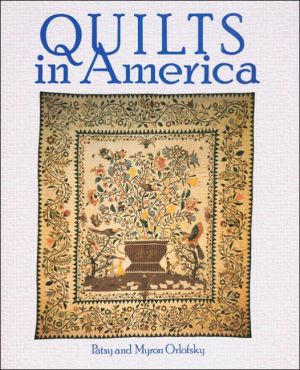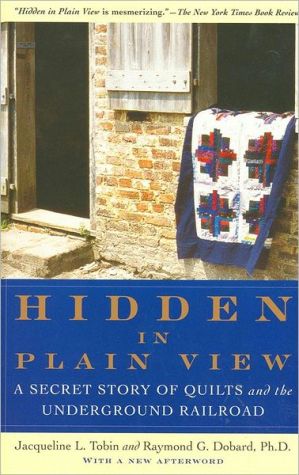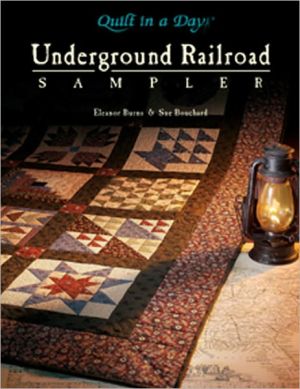Quilts in America
This wonderful treasury surveys nearly 300 years of quilt history, techniques, patterns, and styles. Originally stimulated by the desire for warmth and the need to economize, quilt-making evolved from an extremely practical enterprise into an elaborate and highly personal art form. From the simple, serviceable quilts of the early colonists to the work of twentieth-century quilters, this beautifully illustrated volume surveys virtually every type of quilt and pattern and details the...
Search in google:
As lovingly and meticulously pieced together as a handcrafted coverlet, this classic treasury of traditional quilts is now back in print
Introduction\ Our interest in quilts began a number of years ago when we saw a collection at the home of a friend, Janet Guttenberg. In those days, good quilts of all types were to be found for as little as 25 cents. The quilts were on shelves, hung on the walls, on beds. Many were worn and pale, sometimes almost tatters of material on which there was a faded pattern, others no more than huge fragments of beautiful old textiles. It was startling to see so many. These were not some exotic, rare, Peruvian or Coptic textiles, but simple, homemade American bedcovers. And they were as appealing as any textiles we had ever seen.\ Soon after, we began to collect quilts of our own. As time went on we wanted to learn as much as possible about them: how they were made, something of their history, and, if possible, something about the women who created them. Though many quilts are signed and a number of quilt markers—such as Mary Totten, who created superb pieces during the early 1800s, and Bertha Stenge, who made quilts of great originality during the 1930s and 1940s—are remembered today, the vast majority are unknown, their names and personal histories forgotten.\ We began to appreciate quilts for their historical importance, documenting the style and taste of different eras in the country's development. They provide rich examples of the textiles used in clothing and household furnishings, bringing alive the actual color, design, and types of materials during succeeding periods of our history.\ More and more we became fascinated by the information surrounding textiles and the enormous complexity and range of skills required to make quilts. Quilt makers were not only expertneedlewomen but had a great feeling for textiles, as they were often involved in every process of the fabrication of materials—from growing the flax or shearing the wool to the weaving and dyeing stage.\ Enjoyable, also, is the knowledge that the quilt is an extremely personal object made of bits of clothing—petticoats and shirts and ties, party dresses and everyday dresses and furnishing materials that have seen wear. There is a look to the fabrics that only age and use can give them—rich patina in which the white turns ivory or beige; the blue a deep indigo, almost black. Colors that were once bright turn pale and fade, and little calicos, side by side with other prints, seem to become one. What appeared to be a single patch is actually made up of two or three pieces of infinitesimally small size. There are fabrics that are no longer made, tiny sprigged calicos and printed chintzes in subtle colors that, in themselves, evoke a whole era—old houses with porches, featherbeds, attics, sewing baskets, and thimbled fingers. Over a long period of time, quilts were an intimate part of the family life, used over and over again. We do not believe that quilts must be in pristine condition in order to be appreciated. Many quilts will be worn, the fabrics deteriorated, the colors faded, but we believe this to be the life of the quilt. A quilt was meant to be washed and it was made of materials that had been washed repeatedly. The sun, the use, the washing give a quilt its subtlety and patina.\ We have traveled over the country and found interesting quilts wherever we went. We have talked to many people and it is startling to realize the degree of pleasure people feel about quilts. Everyone seems to have a quilt for which he or she has some special sentiment or memory or experience: helping at a quilting bee or sewing pieces together for a quilt top or owning a family heirloom quilt.\ We believe we have uncovered many hitherto unknown quilts of particular beauty and interest, as well as historic quilts that have been previously identified but not illustrated.\ Some of what is set forth, particularly in the chapter "Patterns and Pattern Names," is in the realm of folklore; but that is part of the record of quilts in America. The selection of photographs of the quilts has been based on the various methods of decoration for a quilt: appliqueing, piecing, stenciling, embroidering, and quilting. A great number are from public rather than private collections, in order to enable readers to see quilts at museums, restorations, and historical societies and familiarize themselves first hand. We have stressed everyday quilts of common goods as well as intricately designed counterpanes of rare imported materials. We have looked for the maverick design as well as the classic; and the historically important as well as the quilt of totally unknown provenance.\ For a fuller understanding of the text, certain decisions have been made regarding definitions of textile techniques and terms.\ The word quilt comes originally from the Latin word culcita, meaning a stuffed sack, mattress, or cushion; it comes into English from the French cuilte. The word has undergone various spelling changes since the thirteenth century; "cowltes," "qwhiltez," "quildes," and "twilts" have been mentioned in histories, inventories, plays, and poems. Today the word quilt means two cloths sewn together with something soft between or, to be more specific, two or more fabrics held together with stitches at frequent intervals to confine in place the several layers of cloth.\ Some quilts do not really fit exactly into this definition. Many quilts are only two layers. The maker has chosen to leave out the interlining either to achieve a less weighty bedcover or to enable herself to do more delicate quilting. And then some quilts contain no quilting at all. The two layers may be joined together by tying or knotting or, as in the case of many "Log Cabin" quilts (a classic design category), they may be sewn together as they are being constructed. A simple definition that takes in all these contingencies is "textile sandwich."\ There are two other words used frequently and interchangeably in literature on quilts: counterpane and coverlet. Counterpane simply means the spread used on top of the bed, the outer covering, and has the connotation of the "best spread." It is not necessarily a quilt. The word coverlet can be used interchangeably with counterpane to mean a bedcover or bedspread but it is also the name given to a whole family of heavy, patterned, woven blankets or spreads.\ A simple description of piecing is joining two pieces of material together by a seam, and to applique is to sew a piece cut from one fabric onto a ground fabric. The term patchwork is used in our text as a general, nontechnical term referring to both techniques. We have also omitted the word trapunto in favor of stuffing because trapunto refers to a highly specialized type of Italian quilting seldom found on American quilts. Quilt sizes have been omitted where information was not available. In photographs that show details, we have chosen to omit the sizes, except in cases where overall quilt dimensions seemed pertinent.\ Finally, we have elected to date quilts by quarter-century periods unless there is a realistic provenance or historic record or a specific date is indicated on the quilt. Because of the elusive nature of quilt dating, this offers more opportunity for accuracy.\ What is set forth is the result of our investigations. More facts remain to be uncovered, new quilts to be found and studied, quilters to be named. The possibilities seem unending. We hope this book is a beginning.
Preface Introduction The History of Quilts in America The Quilt Quilting Tools and Equipment Stenciled, All-White, and Embroidered Quilt Tops The Whole-Cloth Quilted Spread Types of Quilts Patterns and Pattern Names Signing and Initialing The Age of a Quilt Care Bibliography Index Picture Credits








